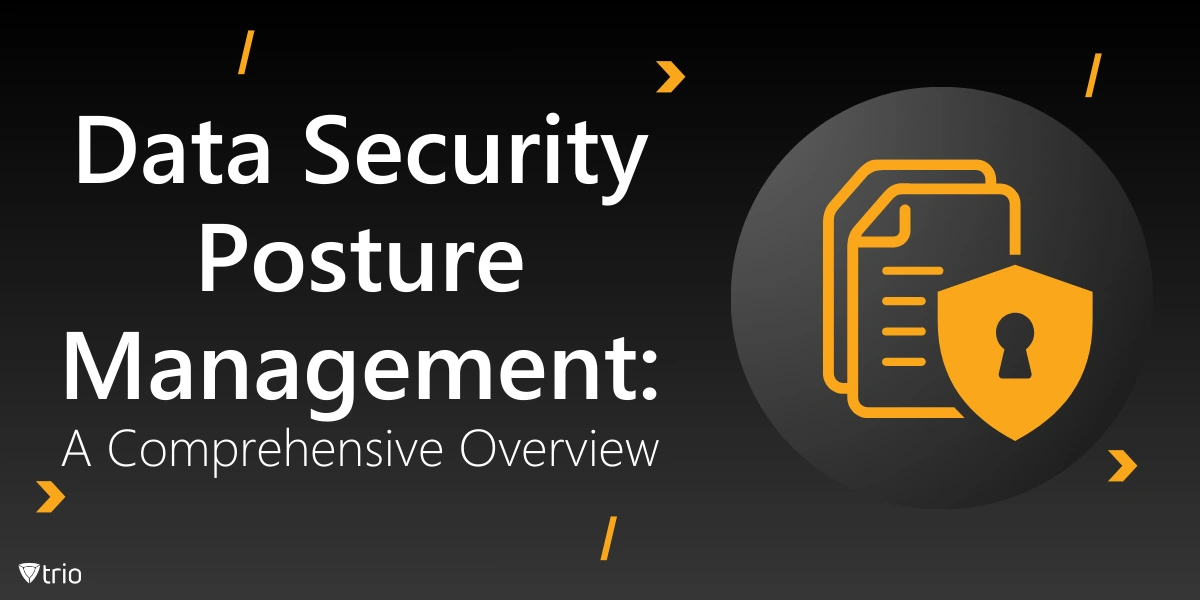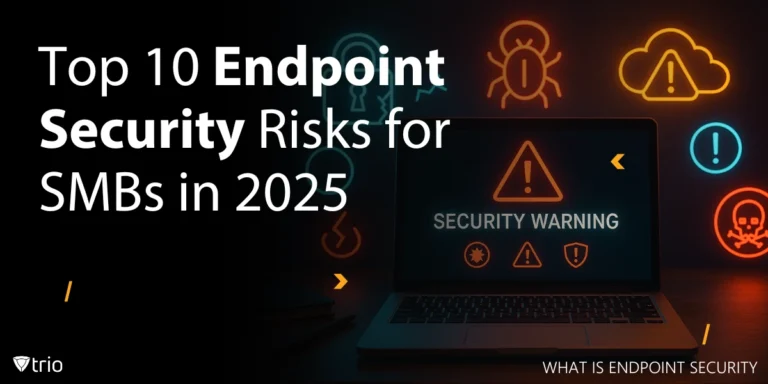In an era of hyper-digitalization, organizations are inundated with vast quantities of sensitive data scattered across hybrid and multi-cloud environments. Protecting this data is no longer just about implementing security tools; it requires a sophisticated strategy to assess, analyze, and adapt security controls continuously. Enter Data Security Posture Management (DSPM)—a cutting-edge approach designed to elevate the security landscape.
What is DSPM and Why Does it Matter?
DSPM is a framework that evaluates an organization’s data security readiness by mapping, monitoring, and remediating vulnerabilities. It extends beyond traditional perimeter security by focusing directly on securing sensitive data, whether stored in databases, cloud storage, or SaaS platforms. Core components of DSPM:
- Data Discovery: Automatically identifying sensitive data and classifying it by importance. This prevents data loss.
- Contextual Mapping: Creating a comprehensive view of data flows and their exposure risks.
- Risk Prioritization: Ranking vulnerabilities based on their likelihood and impact.
- Proactive Monitoring: Leveraging real-time analytics to detect potential breaches or misconfigurations.
- Automated Remediation: Deploying workflows to mitigate risks, such as fixing misconfigurations or revoking excessive access permissions.
In environments with distributed data infrastructures, DSPM ensures organizations maintain visibility into their sensitive assets, helping to meet compliance requirements and secure intellectual property. It is a crucial part of vulnerability management.
DSPM’s Technical Underpinnings
Some of the DSPM’s technical underpinnings include:
Data Discovery with Machine Learning
Modern DSPM tools utilize advanced machine learning (ML) algorithms to identify sensitive data types, such as Personally Identifiable Information (PII), Protected Health Information (PHI), and financial records. These ML-driven systems analyze unstructured and structured data repositories, including obscure data lakes or shadow IT assets.
Dynamic Risk Scoring
DSPM platforms implement contextual risk-scoring algorithms that evaluate threats dynamically. Factors such as data criticality, user behavior analytics (UBA), and network activity are correlated to calculate granular risk scores. For instance, a privileged user accessing large quantities of sensitive data outside of business hours would trigger a higher risk score.
Behavioral Analytics and Anomaly Detection
DSPM tools integrate with Security Information and Event Management (SIEM) systems to monitor deviations from normal activity patterns. This is particularly crucial in preventing insider threats, as anomalies in data access patterns are flagged before they escalate into breaches.
DSPM in Multi-Cloud and Hybrid Environments
As enterprises adopt multi-cloud strategies, securing data becomes more complex due to fragmented visibility. DSPM addresses this by unifying security policies across diverse environments:
- Cloud-Native Security: Integrates directly with cloud service providers (CSPs) like AWS, Azure, and Google Cloud to monitor data storage buckets, databases, and file systems for misconfigurations.
- Hybrid Environment Compatibility: DSPM ensures consistent security enforcement across on-premises and cloud environments, mitigating silos and gaps in coverage.
- Integration with DevSecOps: By embedding data security checks into CI/CD pipelines, DSPM enforces secure coding practices and ensures that new deployments are free of vulnerabilities.

Common Use Cases for DSPM
Some of the common use cases for DSPM include:
- Preventing Cloud Misconfigurations: With DSPM, organizations can identify and remediate issues such as publicly accessible storage buckets, weak encryption protocols, or overly permissive IAM roles in real-time.
- Ensuring Data Compliance: DSPM maps data flows against regulatory requirements like GDPR, HIPAA, and CCPA, automating compliance checks and generating detailed audit reports.
- Mitigating Insider Threats: By leveraging behavioral analytics, DSPM tools detect anomalies indicative of malicious insider activity or accidental data exposure.
- Enhancing Incident Response: In case of a data breach or the need for a disaster response, DSPM provides detailed insights into affected data assets, enabling security teams to respond swiftly and limit damage using an incident response plan.
Challenges in Implementing DSPM
Despite its advantages, deploying DSPM comes with challenges:
- Complexity in Data Mapping: Building accurate, up-to-date data inventories can be daunting in large-scale environments.
- False Positives: Over-reliance on ML models may lead to false alerts, requiring manual validation.
- Integration Issues: DSPM platforms must seamlessly integrate with existing security stacks, which may involve significant customization.
- Scalability: Ensuring that DSPM solutions can handle exponential data growth without performance degradation.
Selecting the Right DSPM Solution
Data Security Posture Management (DSPM) tools provide visibility, assessment, and remediation capabilities to secure sensitive data in hybrid environments. These tools monitor where data resides, how it moves, and who has access to it, identifying vulnerabilities like misconfigurations or unauthorized access. Examples of data security posture management vendors include Palo Alto Prisma Cloud, Symmetry Systems DataGuard, and IBM Guardium. To implement DSPM effectively, organizations must evaluate tools based on these criteria:
- Automation Capabilities: Look for solutions that automate data discovery, classification, and remediation processes.
- Customizable Policies: The ability to tailor risk thresholds and alerts to organizational requirements.
- Third-Party Integration: Ensure compatibility with SIEM, SOAR, and CSP platforms.
- Real-Time Analytics: Opt for tools offering advanced dashboards and analytics for continuous monitoring.
How Mobile Device Management Solutions Enhance Data Security Posture Management
Data Security Posture Management (DSPM) identifies and mitigates risks to sensitive data across cloud and on-premises environments. However, the role of endpoints, particularly mobile devices, in modern workflows introduces significant challenges to ensuring comprehensive data protection. This is where Mobile Device Management (MDM) solutions become essential. By securing devices that access sensitive data and aligning them with DSPM practices, MDM tools provide a critical layer of security.
Streamlining Data Visibility and Control
MDM solutions offer centralized visibility into mobile devices, laptops, and tablets used within an organization. This visibility helps organizations monitor how endpoints interact with sensitive data and ensure compliance with data security policies. By pairing DSPM’s ability to track data flows with MDM’s granular device monitoring, companies gain a complete picture of their data’s movement across endpoints and networks.
For example, if DSPM identifies data residing in unauthorized locations, an MDM solution can immediately identify the devices responsible for those interactions. IT administrators can then isolate, secure, or reconfigure those devices to prevent further risks.
Enforcing Data Access Policies
MDM solutions enforce security policies directly on devices, ensuring only authorized users and applications access sensitive data. These policies include multi-factor authentication (MFA), biometrics, and secure access protocols like VPNs, making them invaluable to DSPM strategies. By integrating MDM with DSPM, organizations can verify device compliance before granting access to sensitive data, minimizing the risk of unauthorized exposure.
Additionally, MDM solutions support geofencing and conditional access, allowing data access only under specific conditions, such as within the corporate network or pre-approved locations. This dynamic security control complements DSPM’s broader efforts to protect data regardless of where it resides.
Automated Risk Mitigation
One of DSPM’s core functions is identifying vulnerabilities in data environments. MDM enhances this process by enabling immediate remediation on affected devices. For instance, if DSPM detects a potential data breach linked to a device with outdated software, the MDM solution can automatically enforce an update or disable access until the issue is resolved.
Remote wiping is another powerful feature of MDM solutions. If a device is lost, stolen, or compromised, IT teams can remotely erase all sensitive data, ensuring it cannot fall into the wrong hands. This functionality tightly aligns with DSPM’s goal of minimizing data exposure risks.
Securing BYOD (Bring Your Own Device) Policies
Many organizations embrace Bring Your Own Device (BYOD) policies, allowing employees to use personal devices for work. While this increases flexibility and productivity, it introduces risks to data security. MDM solutions allow IT teams to segment corporate data from personal data on these devices, ensuring sensitive information remains secure.
When combined with DSPM, MDM solutions provide robust protection for data accessed via BYOD endpoints. DSPM identifies sensitive data, while MDM ensures these endpoints adhere to organizational security policies, minimizing risks associated with personal devices.
Ensuring Compliance and Auditing
Regulatory compliance is a cornerstone of DSPM, and MDM solutions simplify adherence to standards such as GDPR, HIPAA, and PCI DSS. By automating device-level security enforcement, MDM ensures endpoints comply with data protection regulations. MDM tools also maintain detailed logs of device interactions with sensitive data, which are critical for audits and regulatory reporting.
When DSPM highlights compliance risks within the organization’s data environment, MDM ensures that endpoints accessing sensitive data comply with necessary regulations, preventing fines or reputational damage.
Integration with Cloud Environments
As businesses increasingly migrate to cloud environments, DSPM becomes essential for securing cloud-based data. MDM solutions enhance this by securing devices that access cloud-hosted resources. For example, MDM can restrict access to specific applications or cloud storage platforms to pre-approved devices, preventing unauthorized access.
Moreover, MDM solutions often integrate with Single Sign-On (SSO) and Identity and Access Management (IAM) tools, streamlining secure access across hybrid environments. This synergy strengthens DSPM’s ability to protect data while maintaining a seamless user experience.
Conclusion
Data Security Posture Management (DSPM) is a transformative framework that shifts the focus from reactive defenses to proactive data-centric security strategies. By employing cutting-edge technologies like machine learning and real-time analytics, DSPM empowers organizations to adapt to dynamic risk landscapes, secure sensitive data, and maintain compliance. As the complexity of modern data ecosystems grows, adopting DSPM is no longer a choice but a necessity for forward-thinking enterprises.
Trio’s Mobile Device Management solution ensures your endpoints are secure and compliant, complementing Data Security Posture Management efforts. Streamline your data protection strategy with powerful tools to secure mobile devices and mitigate risks effectively. Try Trio’s free trial today to enhance your organization’s data security!
Get Ahead of the Curve
Every organization today needs a solution to automate time-consuming tasks and strengthen security.
Without the right tools, manual processes drain resources and leave gaps in protection. Trio MDM is designed to solve this problem, automating key tasks, boosting security, and ensuring compliance with ease.
Don't let inefficiencies hold you back. Learn how Trio MDM can revolutionize your IT operations or request a free trial today!





